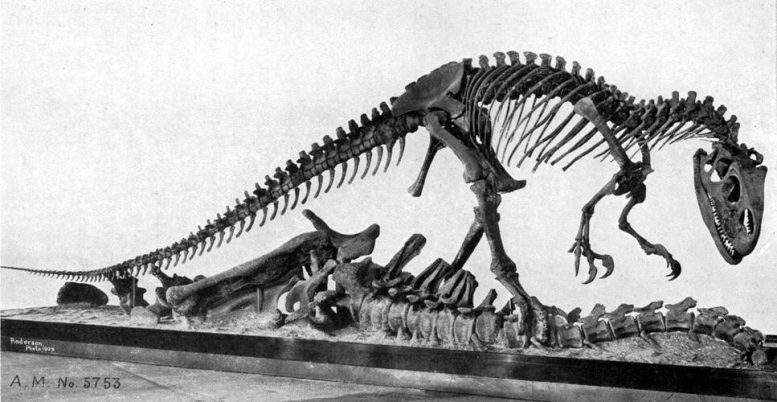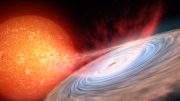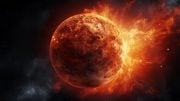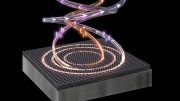
Photograph of the skeletal mount of Allosaurus specimen AMNH 5753, from William Diller Matthew’s 1915 Dinosaurs. Credit: Project Gutenberg e-book, Wikimedia Commons, CC0
Simulation suggests that traits for exploiting carrion might have been crucial for survival.
Carnivorous dinosaurs might have evolved to capitalize on the abundance of giant carcasses, according to recent research published in the open-access journal PLOS ONE. This study, conducted by Cameron Pahl and Luis Ruedas of Portland State University, Oregon, along with their colleagues, proposes that the remains of enormous sauropod dinosaurs could have represented a significant source of sustenance for large predatory dinosaurs.
Agent-Based Model Analysis
Carnivorous dinosaurs lived in ecosystems rich with both living and dead prey. The authors hypothesize that giant carcasses, like those of sauropod dinosaurs, might have provided a major source of food for large carnivores.
To test this hypothesis, the researchers created an agent-based model, a simplified virtual simulation of a dinosaur ecosystem. This model was based on the ancient fauna of the Jurassic-aged Morrison Formation, which included large predators like Allosaurus alongside large sauropods, their carcasses, and an infinite supply of huntable stegosaurs.
In the model, carnivores (intended to simulate allosaurs) were assigned traits that would improve their hunting or scavenging abilities while obtaining energy from meat sources (simulating living prey or sauropod carcasses).
The model measured the evolutionary fitness of these simulated carnivores and found that, when large sources of sauropod carrion were available, scavenging was more profitable than hunting, suggesting that carnivores in such ecosystems might have evolved specialized traits to help them detect and exploit large carcasses.
Evolving Scavenging Behaviors
The authors stress that this model represents a simplified abstract of a complex system, and that the results might be altered with the inclusion of more variables, such as additional dinosaur species or features of the life history of the simulated dinosaurs. They note that models like this might improve our understanding of how the availability of carrion can influence the evolution of predators.
The authors add: “Our evolutionary model demonstrates that large theropods such as Allosaurus could have evolved to subsist on sauropod carrion as their primary resource. Even when huntable prey was available to them, selection pressure favored the scavengers, while the predators suffered from lower fitness. So we think allosaurs probably waited until a bunch of sauropods died in the dry season, feasted on their carcasses, stored the fat in their tails, then waited until the next season to repeat the process. This makes sense logically too, because a single sauropod carcass had enough calories to sustain 25 or so allosaurs for weeks or even months, and sauropods were often the most abundant dinosaurs in the environment.”
Reference: “Big boned: How fat storage and other adaptations influenced large theropod foraging ecology” by Cameron C. Pahl and Luis A. Ruedas, 1 November 2023, PLOS ONE.
DOI: 10.1371/journal.pone.0290459









So lion wait till all elephant die and become a scavenger .the most advance tyrannosaur ever the Nile crocodile is great hunter it catch any thing it can catch it and allosaur are tyrannosaur .allosaurus is clearly great predator it’s skull thin light weight for struggling prey it has best arm movement in dinosaur that is clearly better than early dinosaur theropod which it is simular they were eagle type predator not like t.ex and gator .most theropod predator was like allosaur up and down skull movement like birds not like side movement like gator and t.rex it’s skull has specialize muscle for a bird type predator in the skull .the neck has ball joint the early theropod predator like t.rex lack these joint the neck is flat bone no ball joint not a very moveable neck for up and down all dinosaur neck can not do side movement it’s fix because of neck ribs the best for that is sauropod and gator some of ribs are reduce but the gator neck is still fix but some scientist think sauropod can move neck to side .allosaurus neck movement is better than birds like the eagle for up and down .allosaur allso has hoof toe a mammal feature for fast mammal allso found in fossil mesoeucrocodylia there are bite mark on stegosaur fossil of allosaur and foot print all adult this show pack hunting clearly this is not a scavenger these dinosaur lead to Nile crocodile clearly these were great predator
These fat storage in the tail is link to warm bloodedness simular to mammal warm bloodedness system .it’s like a battery the heart of gator is very simular to mammal it’s better .they use fat for extra energy the warm bloodedness need lots of energy for the muscle the gator is warm blooded the only dinosaur alive modern crocodilian is the greatest dinosaur ever live